How to grow Echinops
Originating from gravelly slopes and dry grassland throughout the Mediterranean climate zone, echinops is a highly drought tolerant and hardy perennial. Its spiny foliage is often greyish-white and woolly, and its distinctive spherical flowerheads tend to be blue or white.
The genus is made up of around 120 species, though it is the many cultivated varieties often seen erupting from our gardens. The bristly, round flowers appear throughout summer, and are a magnet for bees, butterflies, and other pollinators. They are also highly valued for cutting and drying.
This is a resilient, undemanding, and long-lived addition to the garden which remains untroubled by rabbits and deer.
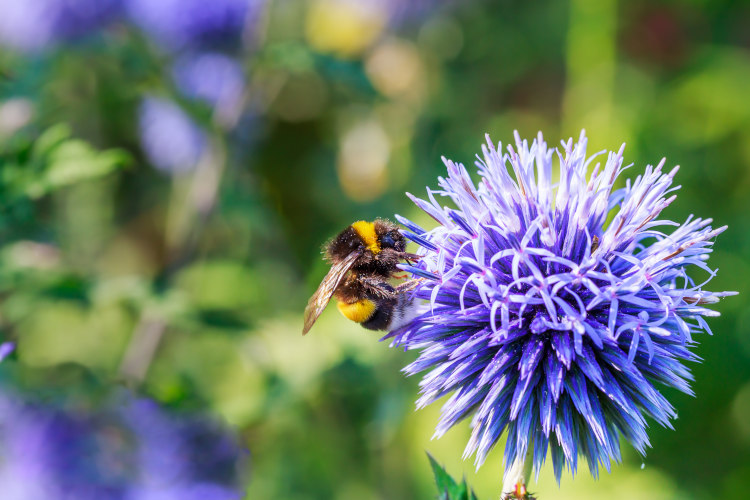
Key Information
Position
Soil Conditions
Hardiness

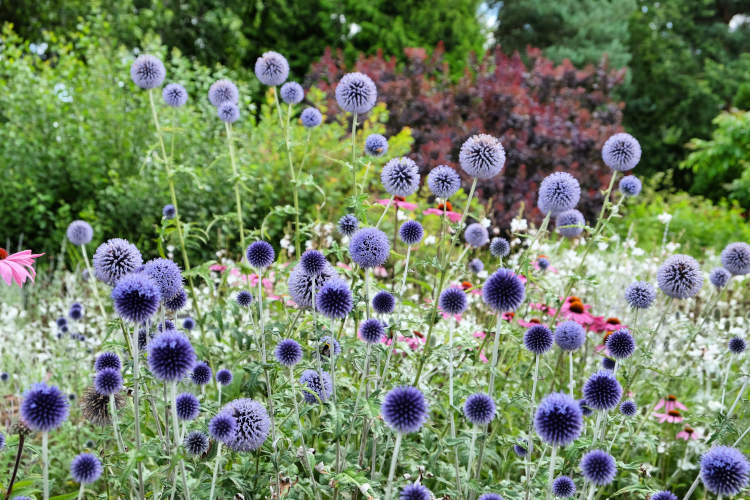
Where & when to plant Echinops
For best results, plant in autumn or spring. An autumn planting is suitable for those gardening in ‘mild’ conditions (broadly speaking, this is the southern half of the UK). For those liable to very cold winters, it is best to wait until spring (generally the northern half of the UK).
Owing to its long tap root, echinops is able to thrive in tricky, parched spots, such as a gravel garden, sun-baked slope, or anywhere with poor, stony soil. It can also be grown in more favourable conditions and is tolerant of almost any soil type apart from very damp.
Echinops is ideal for adding height and interest to the back of a border, or as a nectar-rich inclusion in a wildlife garden. It is not suitable for containers due to the nature of its root growth.
How to plant Echinops
- Clear the chosen area of weeds.
- Dig a planting hole several times larger than the root ball. If you are gardening on anything other than poor, stony soil add a good helping of horticultural grit and mix thoroughly. Avoid heavy clay soil if possible.
- Place the plant in the hole, ensuring the top of the root ball sits level with the surface of the soil. Too low and the plant may rot, too high and the roots can dry out.
- Backfill with soil and firm in gently with your foot.
- Soak well with water.
- Taller varieties may require staking in windy areas. A network of hazel branches inserted firmly into the ground is both attractive and effective.
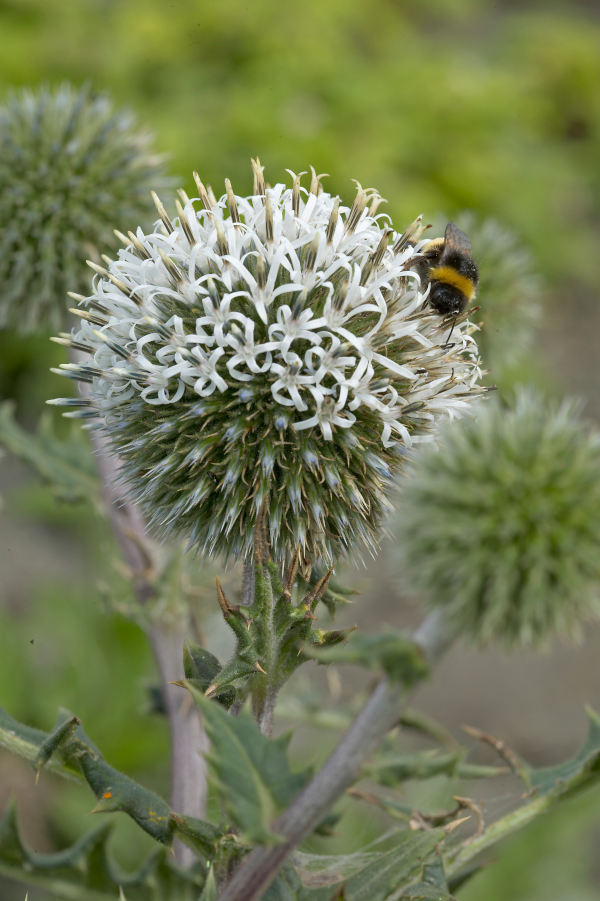
What to plant with Echinops
This strong, bold plant fits easily into almost any style; from soft, naturalistic prairie-like schemes to busy cottage gardens and modern minimalist planting. Its neat, rounded flowerheads work best when combined with a variety of other flower forms, including open and daisy-like (e.g. echinacea), flat umbels (e.g. anthriscus), upright spires (e.g. isoplexis), and frothy clouds (e.g. thalictrum).
To exploit the superior drought resistance of echinops, use it to create a stunning ‘dry garden’ with fellow tough cookies eryngium, cistus, gaillardia, osteospermum, verbascum, delosperma, and one of our favourite recent discoveries, Delphinium nudicaule ‘Laurin’.
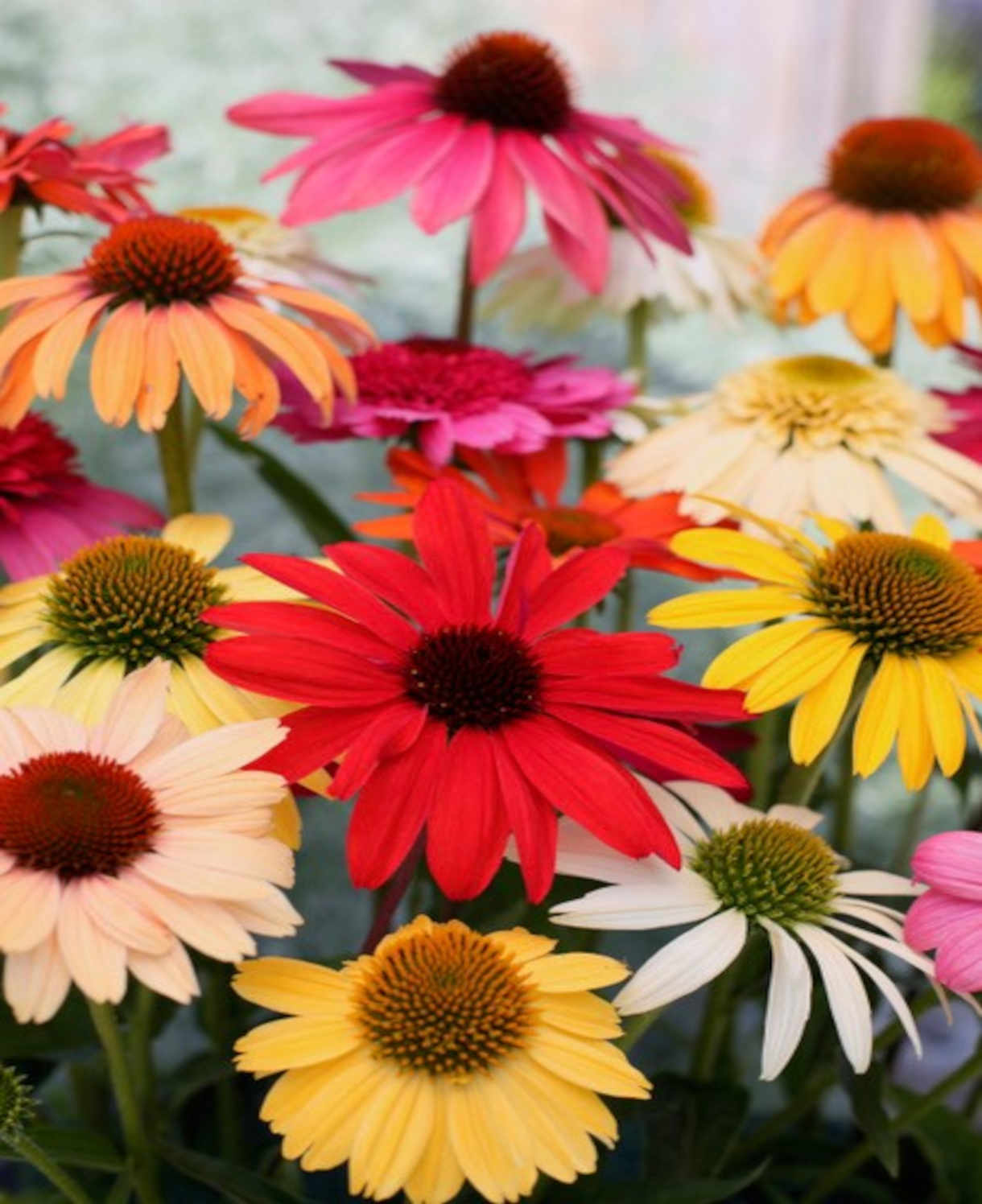
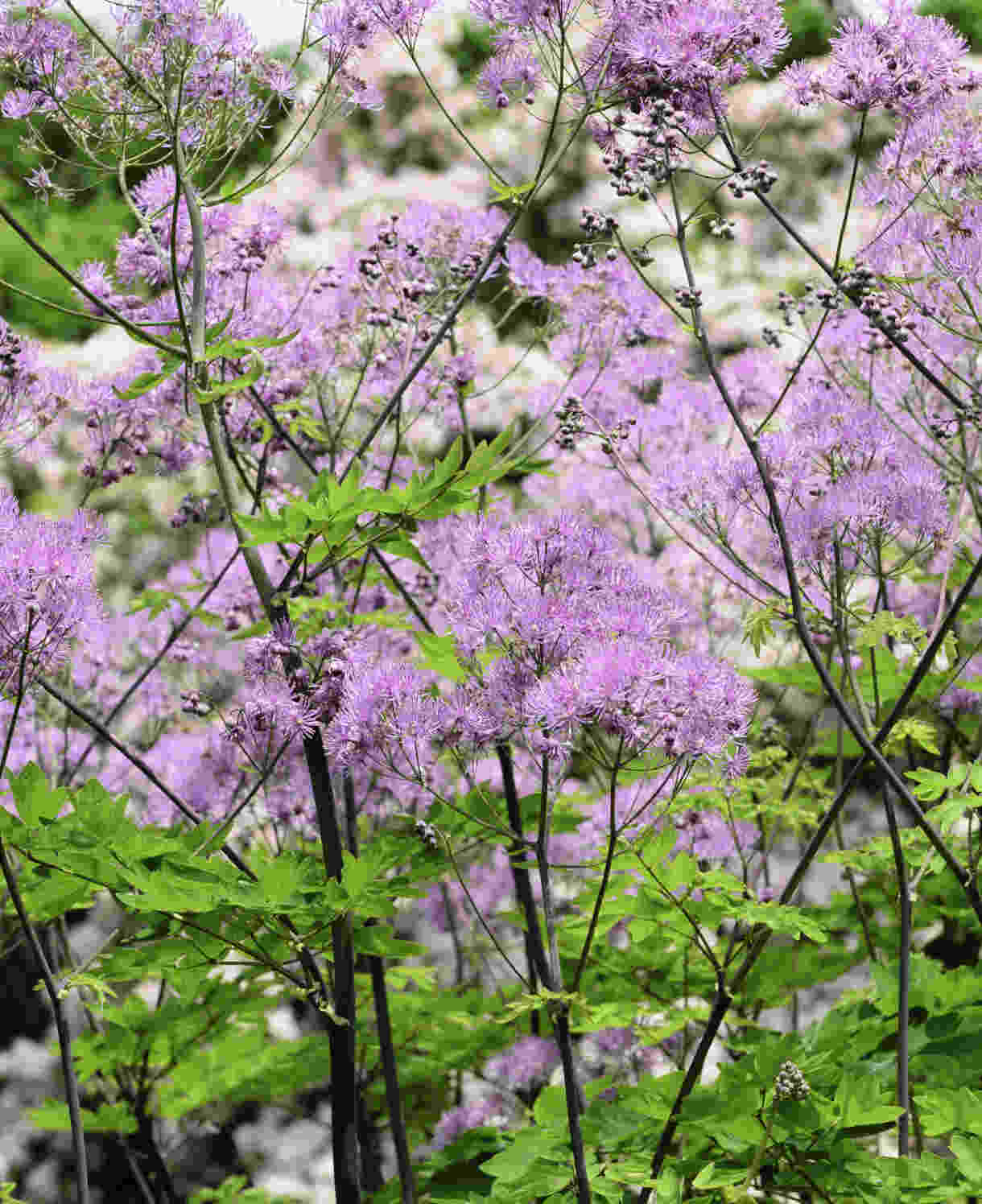
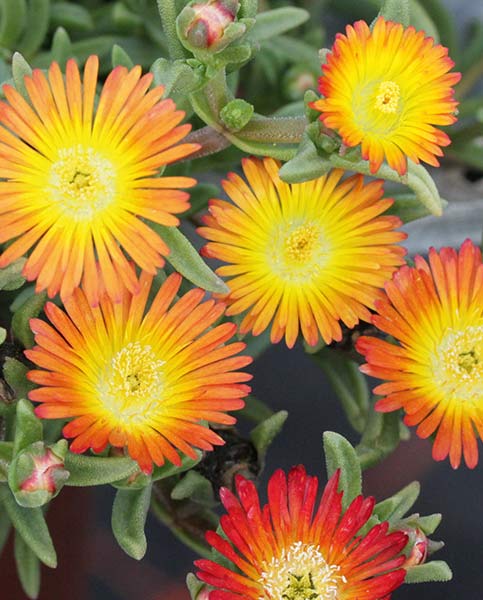
How to care for Echinops
Pruning and Deadheading
Cut back after flowering to encourage a second flush. Do this again, if necessary, as part of the autumn/ winter garden tidy.
Echinops are keen self-seeders, so keep plants deadheaded if you wish to avoid this.
Watering
Water echinops until established, after which it tends to look after itself.
Cold Protection
Echinops is as hardy as they come (to -20°C and beyond), and therefore does not require any protection over winter.
Pests and Diseases
There are no known diseases affecting echinops. Its only potential pest is aphids.
Aphids are part of a balanced garden ecosystem and the best approach is to leave them to their natural predators (e.g. birds, ladybirds, and wasps). When numbers are so large, however, that their feeding starts to inhibit and disfigure growth, you may feel it necessary to take additional action. Regularly blasting off with a hose or wiping away with a cloth or piece of kitchen paper can help to keep numbers down without harming other members of the ecosystem.
How to propagate Echinops
Echinops will spread readily from seed, so in effect doing nothing (and this includes no deadheading) can be the easiest way of increasing their number in your garden.
If you have an established clump and wish for speedier results, lifting and dividing will provide you with several new, good-sized plants. This can be done in autumn or spring, and every four to five years is ideal. As well as enabling you to distribute echinops though your garden, this also maintains the health and vigour of existing specimens.
- Choose a day when the soil is not frozen or waterlogged.
- Dig the plant out of the ground.
- Shake off any excess soil.
- Separate the plant into sections using either swift, cutting blows with a sharp spade, or two forks inserted back-to-back with tines touching, handles then pushed together to prise the plant apart.
- Discard old, damaged, or surplus pieces, keeping healthy, vigorous material.
- Replant selected pieces where desired.
- Water well until fully established.
Common Echinops questions
- Is echinops hardy?
Yes, it has the maximum hardiness rating of H7. See ‘Cold Protection’ section above. - Is echinops invasive?
Because of its tendency to self-seed, some species of echinops can start to colonise an area if left unchecked. This can be a useful characteristic in larger gardens or wildlife settings, though if not wanted (perhaps in a smaller space), it can be very easily avoided by deadheading flowers before they have a chance to set seed, and weeding out any new seedlings that do appear. - Can echinops grow in shade?
Partial shade will be tolerated, though in these conditions plants can have a tendency to grow a little leggy – particularly if the soil is more on the moist side. Full shade is a definite no.
- How long does echinops take to grow?
Echinops will reach its full eventual size in two to five years.




